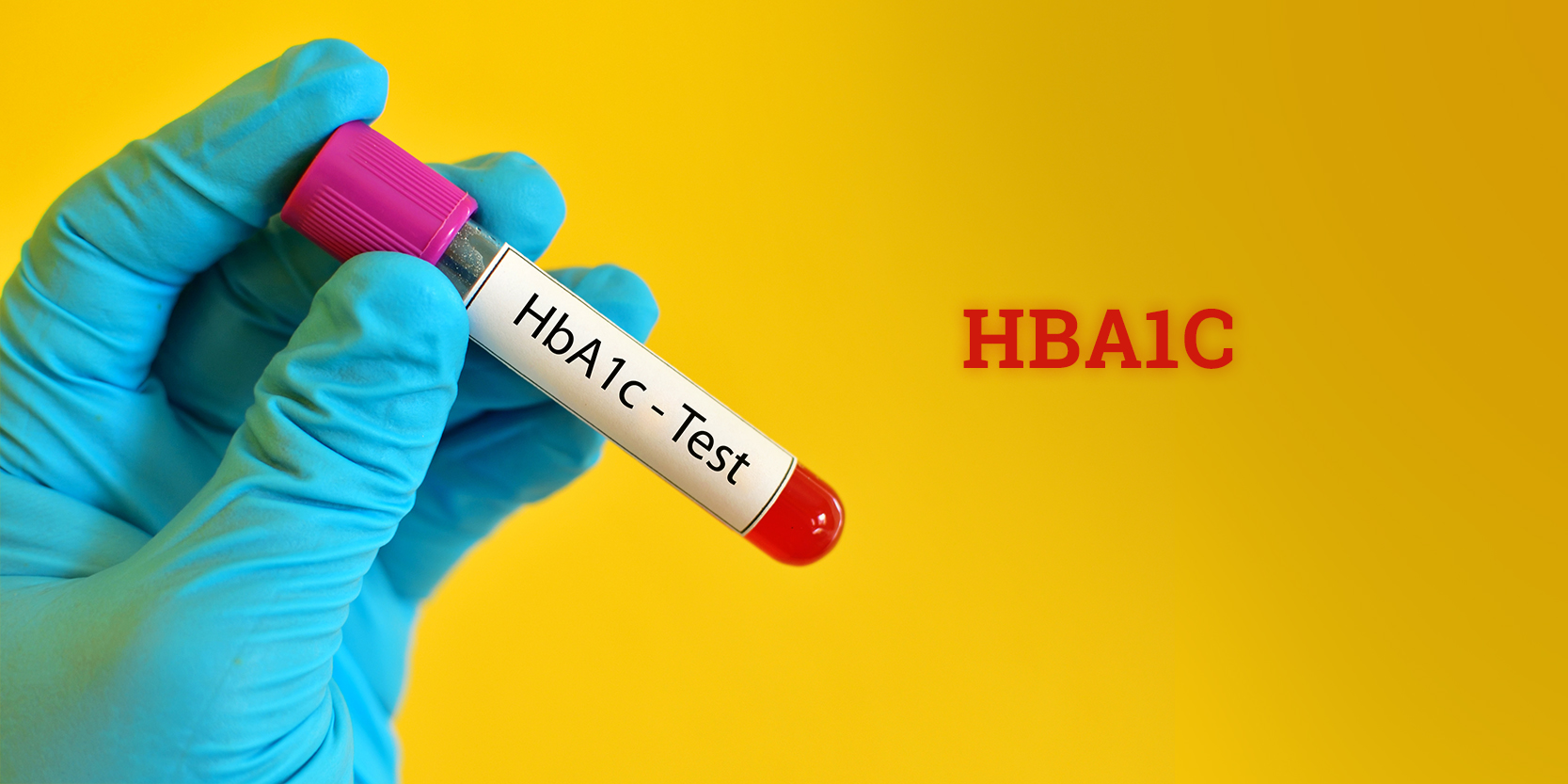HbA1c is Glycated Haemoglobin that is formed when excess sugar in the blood binds to the haemoglobin protein, present inside red blood cells.
HbA1c Test
HbA1c quantifies the % of glycated haemoglobin molecules in the blood. This test is considered as a gold standard for determining chronic hyperglycaemia and gives approximate values of average blood glucose levels for preceding 8 to 12 weeks.
Normal HbA1C levels
The normal range of HbA1c levels is 4% to 5.6% in people without diabetes.
Purpose of the HbA1C test
- It is used to diagnose Diabetes and prediabetes.
- HbA1c plays a significant role in the Management of Diabetes:
- It helps in the long term assessment of glucose control in a patient on antidiabetic treatment.
- It assists in decisions regarding therapy.
- It predicts disease progression and risk of developing complications: Increased HbA1c levels increases the risk of complications (eye problems, nerve and kidney diseases).
It is recommended that HbA1c should be checked in persons with diabetes
- At least twice a year, if sugar control is good.
- Every 3 months if target levels are not achieved, or there is a change in treatment.
Procedure of Test
- A blood sample (a few ml of blood) is taken from the arm for HbA1c assay.
- It can be carried out at any time of the day.
- It does not require fasting.
Result and Interpretation
HbA1c levels between 5.7% and 6.4% indicate the state of increased blood sugar (Prediabetes).
HbA1c levels of 6.5% or higher reflect Diabetes.
HbA1c and Sugar Levels Chart
| Diagnosis | HbA1c | Estimated Average Glucose Levels (mg/dl) | Fasting Blood Glucose (mg /dl) |
|---|---|---|---|
| Normal | Below 5.7% | <117mg/dl | 70-100 |
| Prediabetes | Between 5.7% and 6.4 % | Between 117 to 137 | 101-125 |
| Diabetes | 6.5% or higher | 139.8 or higher | 126 or higher |
Reference: American Diabetes Association .
The target of treatment intervention is to keep HbA1c levels below 7% (well-controlled Diabetes).
FAQ
The normal range of HbA1c levels is 4% to 5.6%
HbA1c refers to glycated haemoglobin, which is formed when excess glucose in the blood is attached to the haemoglobin.
High HbA1c implies there is a high risk of developing complications associated with Diabetes.













